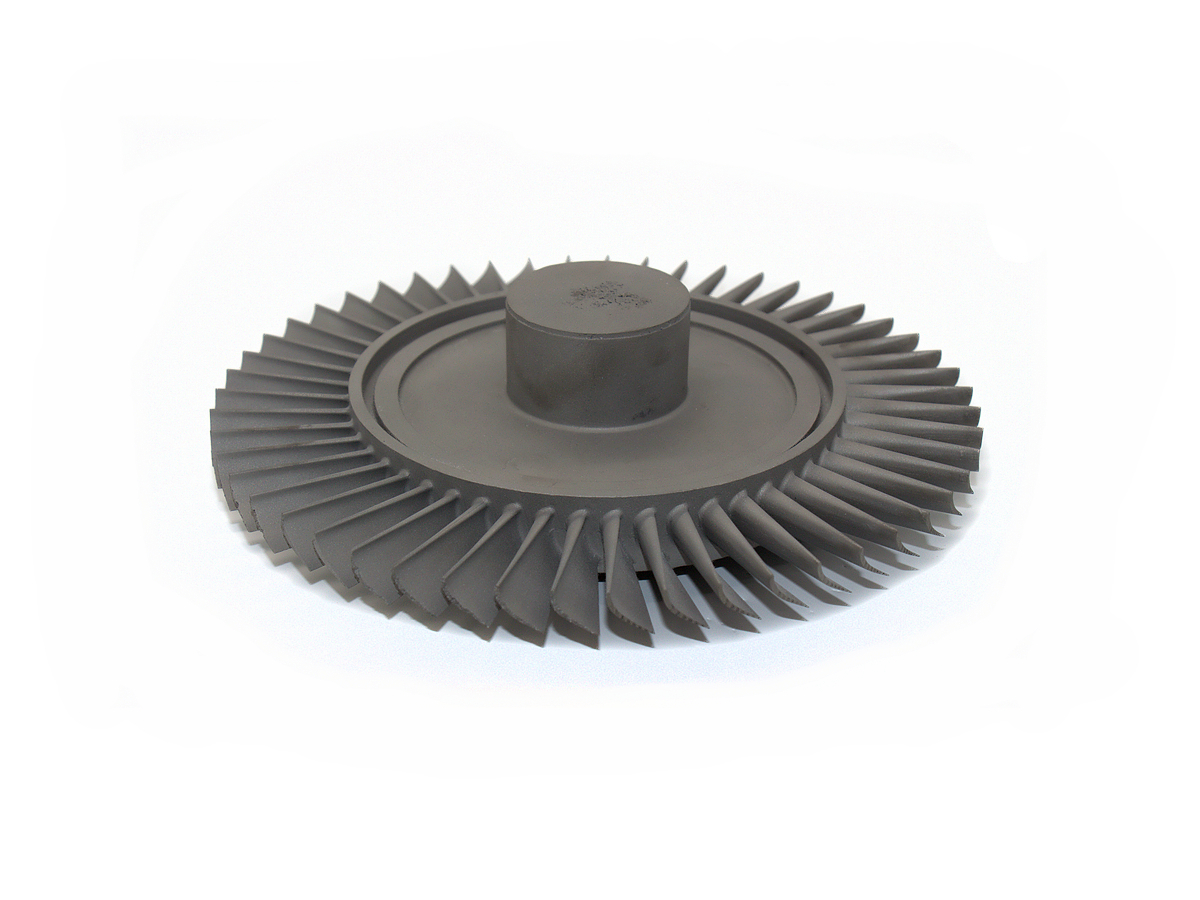Low-Volume CNC Machining of Superalloys for High-Performance Aerospace Components
Introduction
Low-volume CNC machining of superalloys offers manufacturers an efficient and precise solution for producing high-performance aerospace components. Superalloys like Inconel, Hastelloy, and Titanium alloys are known for their ability to withstand extreme temperatures, high stresses, and corrosive environments, making them ideal for critical aerospace applications. Industries in aerospace and defense increasingly rely on advanced machining techniques, such as Superalloy CNC Machining, to produce components with tight tolerances (±0.005 mm accuracy) and complex geometries vital to aerospace systems' safety and performance.
The capability to quickly produce low volumes of precision parts through Low-Volume Manufacturing ensures rapid development cycles, enabling engineers to test, refine, and validate designs before full-scale production.
Superalloy Material Properties
Material Performance Comparison Table
Superalloy Type | Tensile Strength (MPa) | Yield Strength (MPa) | Hardness (HRC) | Density (g/cm³) | Applications | Advantages |
|---|---|---|---|---|---|---|
1300–1400 | 850–950 | 40–45 | 8.9 | Aerospace turbine blades, engine parts | Excellent high-temperature strength, oxidation resistance | |
800–900 | 350–500 | 30–35 | 8.9 | Chemical reactors, aerospace components | Exceptional corrosion resistance, high-temperature performance | |
900–1000 | 800–900 | 35–40 | 4.43 | Aircraft structures, compressor blades | Lightweight, strong, excellent fatigue resistance | |
1150–1250 | 550–750 | 40–45 | 8.44 | Aerospace seals, rocket components | High resistance to oxidation and corrosion at extreme temperatures |
Selecting the Right Superalloy Material
Choosing the appropriate superalloy material for low-volume CNC machining depends on specific performance requirements, including thermal resistance, mechanical strength, and environmental conditions:
Inconel 718: Ideal for aerospace components subjected to extreme temperatures and mechanical stresses, offering high strength and excellent oxidation resistance at temperatures up to 700°C.
Hastelloy C-276: Best suited for aerospace and chemical processing applications where corrosion resistance and high-temperature performance (up to 1000°C) are critical.
Titanium Ti-6Al-4V: Highly suitable for lightweight, high-strength components like aircraft structures and turbine blades, offering excellent fatigue resistance and corrosion resistance.
Inconel 625: Recommended for parts exposed to severe environmental conditions, offering high oxidation resistance and durability in temperatures up to 1000°C, commonly used in turbine and combustion systems.
CNC Machining Processes for Superalloy Components
CNC Process Comparison Table
CNC Machining Process | Accuracy (mm) | Surface Finish (Ra µm) | Typical Uses | Advantages |
|---|---|---|---|---|
±0.005 | 0.4–1.2 | Complex aerospace parts, turbine blades | High precision, complex geometry | |
±0.005 | 0.4–1.0 | Rotationally symmetrical aerospace parts | Consistent results, high accuracy | |
±0.01 | 0.8–3.2 | Mounting holes, threaded components | Fast, precise hole-making | |
±0.003 | 0.2–1.0 | Aerospace engine components, intricate parts | Superior accuracy, complex geometries |
CNC Process Selection Strategy
Selecting the appropriate CNC machining process for superalloy aerospace components depends on part complexity, accuracy requirements, and production speed:
CNC Milling: Ideal for complex aerospace components with intricate features, allowing precise shaping and tight tolerances of ±0.005 mm for high-performance turbine blades and engine parts.
CNC Turning: Optimal for producing cylindrical aerospace components with consistent dimensions and surface finishes, offering precision and high repeatability for rotationally symmetrical parts.
CNC Drilling: Perfect for making accurate holes and threaded components, with precision up to ±0.01 mm, critical for aerospace parts requiring mounting holes and fasteners.
Multi-Axis Machining: Essential for creating highly complex and detailed aerospace components with superior precision (±0.003 mm), ideal for intricate geometries and reducing machining time.
Surface Treatments for Superalloy Components
Surface Treatment Comparison Table
Treatment Method | Surface Roughness (Ra µm) | Wear Resistance | Max Temp (°C) | Applications | Key Features |
|---|---|---|---|---|---|
≤0.8 | Superior | 450–600 | Aerospace tools, wear parts | Increased hardness, extended component life | |
≤0.4 | Excellent | 250 | Precision aerospace components | Improved surface finish, corrosion resistance | |
≤1.0 | Excellent | 1300 | Engine parts, turbine blades | Enhanced thermal protection, oxidation resistance | |
≤1.5 | Excellent | 1000 | Aerospace landing gears, structural components | Improves fatigue resistance and strength |
Surface Treatment Selection Strategy
Surface treatments significantly enhance the performance, durability, and life expectancy of superalloy components:
PVD Coatings: Ideal for increasing wear resistance and improving the surface hardness of aerospace components, especially in high-temperature environments (up to 600°C).
Electropolishing: Essential for achieving ultra-smooth surfaces (Ra ≤0.4 µm), improving corrosion resistance and minimizing friction, perfect for high-precision aerospace parts.
Thermal Barrier Coatings: Recommended for components exposed to extreme temperatures (up to 1300°C), offering superior thermal protection and enhanced oxidation resistance, crucial for turbine blades and engine components.
Shot Peening: Best for enhancing fatigue strength and resistance, used extensively on aerospace landing gears and structural components to improve performance under stress.
Typical Low-Volume CNC Prototyping Methods
Effective prototyping methods for aerospace superalloy components include:
CNC Machining Prototyping: Enables the rapid production of highly detailed, functional prototypes with tight tolerances for critical aerospace components.
Superalloy 3D Printing: Offers a fast and flexible approach for creating complex geometries before transitioning to traditional CNC machining.
Rapid Molding Prototyping: Efficient for testing superalloy components with moderate complexity, providing quick iterations before final production.
Quality Assurance Procedures
Dimensional Inspection: ±0.002 mm accuracy (ISO 10360-2).
Material Verification: ASTM B637 for Inconel alloys, ASTM B574 for Hastelloy.
Surface Finish Assessment: ISO 4287.
Mechanical Testing: ASTM B557 for tensile and yield strength.
Visual Inspection: ISO 2768 standards.
ISO 9001 Quality Management compliance.
Key Applications
Aerospace: Turbine blades, structural components, heat exchangers.
Power Generation: Gas turbines, combustion chambers, seals.
Defense: Rocket components, missile parts, armor plating.
Automotive: High-performance engine parts, exhaust systems, turbochargers.
Related FAQs:
Why is low-volume CNC machining used for aerospace components?
What superalloys are most commonly used in aerospace CNC machining?
How do surface treatments improve superalloy components in aerospace applications?
What quality standards are applied to CNC machined aerospace parts?
Which industries benefit from low-volume superalloy CNC prototyping?

